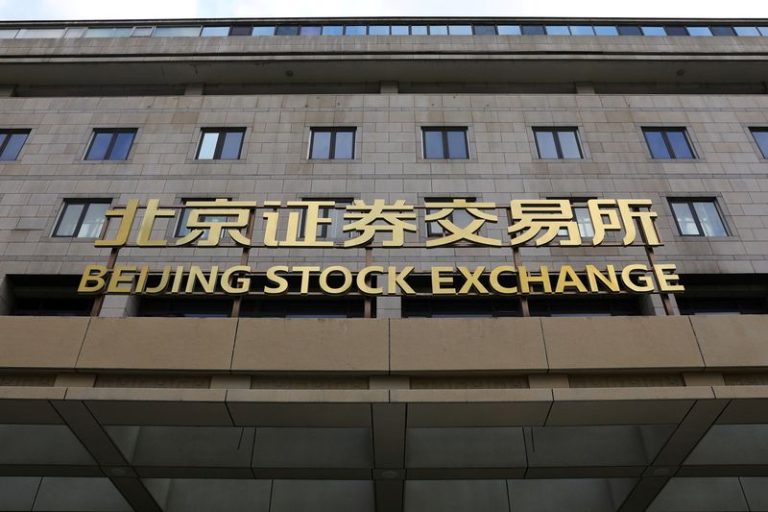By Wayne Cole
SYDNEY (Reuters) – Asian shares were dragged by a slide in South Korea on Monday ahead of a packed week of central bank meetings that should see borrowing costs take a step lower, while U.S. inflation data are the last hurdle to a further policy easing there.
Political tumult in France and South Korea was joined by the fall of Syrian President Bashar al-Assad’s regime, which complicated an already fraught situation in the Middle East.
Still, the mood was generally upbeat after U.S. November payrolls showed enough of a recovery to assuage concerns of a slowdown, but not so much as to forestall a rate cut from the Federal Reserve next week.
“Incoming data support our call for global growth lift into year-end, despite a slipping Euro area and building political stress,” said Bruce Kasman, head of economic research at JPMorgan.
“We expect policy rates in Canada, Euro area, and Sweden to drop to 2% or lower over the coming year, while US and UK rates settle close to 4%,” he added. “This month’s meetings should point in this direction.”
Futures imply an 85% chance on a quarter-point easing at the Fed’s Dec. 17-18 meeting, up from 68% ahead of the jobs figures, and have a further three cuts priced in for next year.
That outlook combined with the bull run in tech stocks to boost the Nasdaq market by over $1 trillion in value last week alone. On Monday, S&P 500 futures and Nasdaq futures were both little changed.
MSCI’s broadest index of Asia-Pacific shares outside Japan eased 0.2%. South Korean stocks fell 1.7% even as authorities pledged all-out efforts to stabilise financial markets amid uncertainty over the fate of President Yoon Suk Yeol.
Japan’s Nikkei firmed 0.4%, helped by an upward revision to economic growth.
Asia will also be alert to data on Chinese inflation later in the session. The consumer price index is seen slipping 0.4% in November, while the annual pace is expected to tick up to 0.5%.
China’s Central Economic Work Conference is also scheduled for this week, though markets are not sure if any new policies will be announced.
The U.S. consumer price report is out Wednesday and the core is seen holding at 3.3% for November, which should be no impediment to a rate easing.
CENTRAL BANKS GALORE
Among the many policy meetings this week, the European Central Bank is fully expected to cut by 25 basis points on Thursday, with a one-in-five chance of 50 basis points.
“With geopolitical uncertainty high and conflicting signals from hard and soft data, monetary policy remains the only game in town to support economic activity, especially in the absence of strong political leadership in Paris and Berlin,” said Barclays (LON:BARC) economist Christian Keller.
“We continue to expect consecutive 25bp cuts until June next year, and then cuts in September and December to reach a terminal rate of 1.5%.”
Markets are leaning toward a half-point cut from the Swiss National Bank on Thursday given slowing inflation and a desire to stop the franc reaching record highs on the euro.
Canada’s central bank is now expected to ease by a half point on Wednesday following a shock rise in unemployment for November. <0@CADIRPR>
The Reserve Bank of Australia holds its meeting on Tuesday and is one of the few seen standing pat, while Brazil’s central bank is set to hike again to contain inflation.
In currency markets, the dollar index was flat at 106.010 after edging up 0.2% last week. The euro stood at $1.0557, having bounced as high as $1.0629 on Friday before the job figures boosted the dollar broadly. [USD/]
The dollar was steady on the yen at 149.92, having held to a 148.65 to 151.23 range last week as investors await further guidance on the prospect of a near-term rate hike from the Bank of Japan.
Geopolitical uncertainty helped gold edge up 0.4% to $2,643 an ounce, but it faces resistance at $2,666. [GOL/]
Oil prices gained some support from events in the Middle East, though markets are preoccupied with the risk of weak demand, particularly from China. [O/R]
Brent added 9 cents to $71.21 a barrel, while U.S. crude rose 12 cents to $67.32 per barrel.

